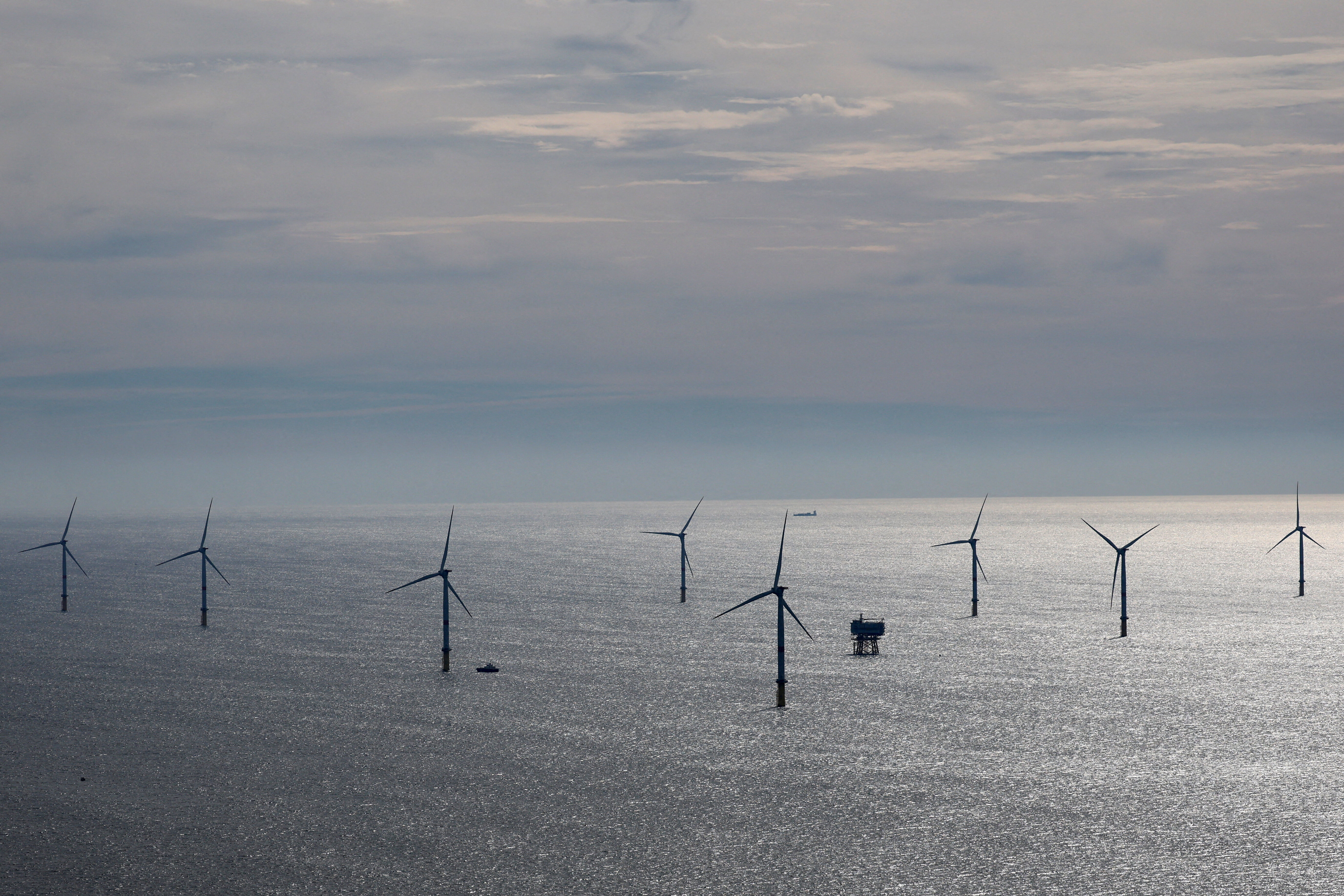Towards healthier, more efficient buildings post-pandemic

The good news is there is a strong business case to go all-electric. Image: Unsplash/Phillip Flores
- The COVID-19 pandemic has ushered in changes making working environments safer and more efficient.
- Demand for healthy building services surged during the pandemic, leading to new and old services alike catering to the healthy buildings market.
- Solutions to improve the health and efficiency of buildings can include new HVAC systems and a fully electric transition.
I’ve had a lingering pandemic anxiety I didn't expect as the world reopens: I don’t like being in closed quarters with people, especially if they have a runny nose or a cough.
As more workers return to businesses and offices, I know I’m not the only one. Employers are spending billions to update work environments in order to communicate to employees that they are taking health measures seriously.
Indoor air quality and sustainability measures may seem at odds. The first harkens to perpetual HVACs humming; the second, passive buildings. With companies prioritizing both climate goals and health concerns, however, it’s clear the two objectives can be quite compatible. That makes now a perfect time to look at commercial spaces anew to make buildings smarter, healthier and more comfortable.
Go all-electric
It turns out, blowing up gas in your home wrecks havoc on indoor air quality. Studies from UCLA and Lawrence Berkeley National Laboratory revealed that most homes that cook with gas in California have unsafe levels of carbon dioxide and nitrogen dioxide pollutants. A meta-analysis of the impacts from nitrogen dioxide found a 42 percent increased risk of childhood asthma, writes Urban Land Institute (ULI).
We’ve written extensively about the climate imperative to get natural gas out of buildings, as gas accounts for 10 percent of total U.S. carbon emissions. Yet increasingly, the health benefits of all-electric buildings are gaining traction.
In the last few months, major news outlets have caught onto the magnitude of the health threat from stoves. Coverage includes The Atlantic, Bloomberg, The Washington Post and The Guardian, as well as a segment on Full Frontal with Samantha Bee. The headlines get straight to the point: "Here's Why Your Gas Stove Is Killing You" and "Go read this article about how we got duped into cooking with gas."
Cooktops and ovens aren’t the only culprits. Water heaters, driers and space heaters can be leaky or poorly vented, sending 20,000 Americans to the ER and killing more than 400 every year. It’s why 38 states require homes to have carbon monoxide detectors.
The good news is there is a strong business case to go all-electric. A new report from ULI outlines that going all-electric provides significant savings both during development and operations. Of course, this varies depending on construction type and climate zones, but many benefits of electrification apply widely across commercial real estate.
Get ahead of wildfire smoke
If you live in the American West, you’re likely well-acquainted with the newest, crappiest time of year: smoke season.
When wildfires break out, smoke can settle in for weeks with fine particulate matter that can cause respiratory and cardiovascular health impacts. When it gets bad, health officials recommend staying indoors, and it is the worst.
In my home in the San Francisco Bay Area, the weather is temperate, so buildings are leaky and air conditioning usually means opening a window. When the smoke rolls around, the inside becomes hot and sticky, and it takes a toll — physically and mentally. Building upgrades need smoke-readiness plans.
The U.S. Environmental Protection Agency recommends steps such as evaluating your HVAC system and weatherization, as well as getting portable air cleaners and extra filters. This type of audit can go hand in hand with energy efficiency upgrades and switching out gas furnaces with all-electric appliances. While you’re at it, get rooftop solar with battery backup to keep the lights on during planned power shutoffs.
This measure has two benefits: keeping you (and your office) healthy during smoke season, and minimizing your contributions to climate change emissions, which are fueling wildfires.
Tools to support healthy offices
Demand for healthy building services surged during the pandemic, leading to new and old services alike catering to the healthy buildings market.
This week, a new consortium launched to address both indoor air quality (IAQ) efficiently: Alliance for Sustainable & Practical IAQ in Real Estate (ASPIRE). The group aims to bring together data and analytics to offer commercial real estate managers information to monitor and optimize IAQ, while reducing energy and emissions.
Aircuity, a software company that focuses on health and sustainability, launched a new product this week to marry energy and air quality monitoring. The program, Airside, is an energy dashboard to communicate to building owners inefficiencies throughout the portfolio.
The International WELL Building Institute’s health and safety certification, which certifies a building has met certain health-promoting measures, averaged a million square feet of newly enrolled projects daily during the pandemic (which explains how the company was able to secure a star-studded cast for its ad campaign.)
As workers head back to the office, more tools and technologies certainly will emerge.
Our collective heightened sensitivity for safety and health, and the need to decarbonize buildings, could usher in a long-term trend of investing in buildings of the future. And it isn’t coming a moment too soon.
Don't miss any update on this topic
Create a free account and access your personalized content collection with our latest publications and analyses.
License and Republishing
World Economic Forum articles may be republished in accordance with the Creative Commons Attribution-NonCommercial-NoDerivatives 4.0 International Public License, and in accordance with our Terms of Use.
The views expressed in this article are those of the author alone and not the World Economic Forum.
Stay up to date:
Future of Work
Forum Stories newsletter
Bringing you weekly curated insights and analysis on the global issues that matter.
More on Energy TransitionSee all
Roberto Bocca
November 17, 2025








